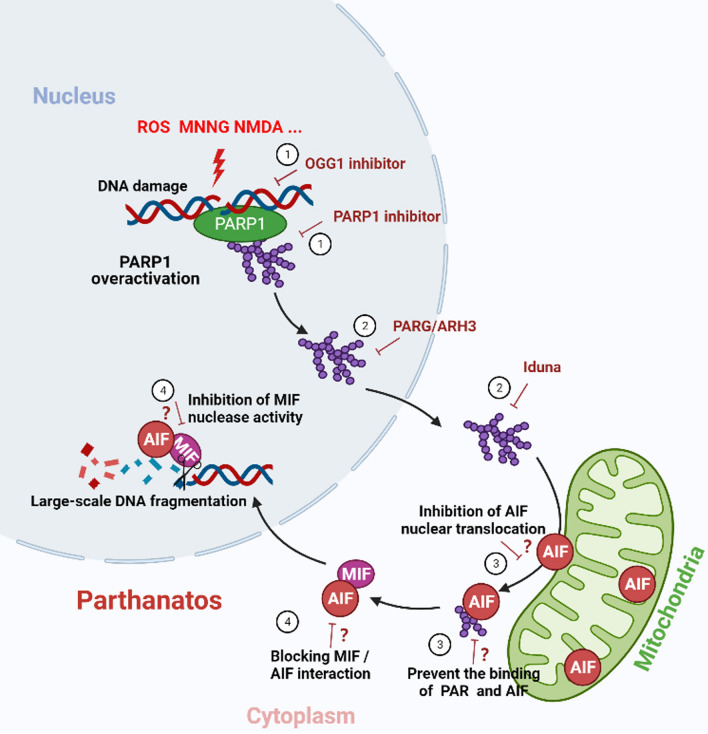Fig. 4.
Potential therapeutic targets for parthanatos-related diseases. ① Inhibition of PARP-1 hyperactivation. Both OGG1 and PARP-1 inhibitors inhibit PARP-1 overactivation and thus inhibit the process of parthanatos. ② Targeted regulation of PARG or ARH3 levels. Promoting PAR degradation, activating Iduna, or mimicking the effects of Iduna binding with PAR to prevent PAR polymer induced parthanatos. ③ Inhibition of AIF nuclear translocation. Research and development agents that inhibit nuclear translocation of AIF, or specifically block the binding of PAR to AIF. ④ Inhibition of the nuclease activity of MIF. On the one hand, the interaction between AIF and MIF can be destroyed to inhibit the transfer of MIF into the nucleus, and on the other hand, targeted inhibition of the nuclease activity of MIF to prevent its cleavage of genomic DNA. “?” refers to a hypothetical therapeutic target to be addressed by joint efforts. PARP-1 poly (ADP-ribose) polymerase 1, OGG1 8-oxo-7,8-dihydroguanine glycosylase1, PARG PAR glycohydrolase, PAR poly(ADP-ribose), ARH3 ADP-ribosyl-acceptor hydrolase 3, AIF apoptosis-inducing factor, MIF migration inhibitory factor

